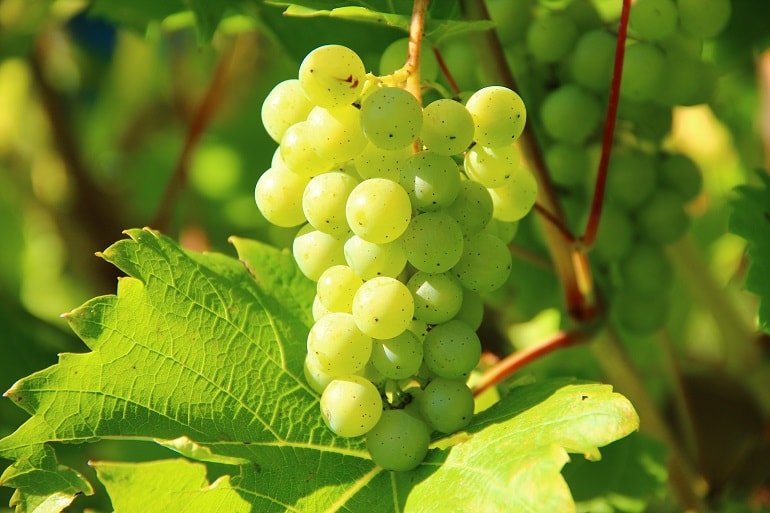Grape Harvesting – When and How to Harvest your Vineyard

This post is also available in:
This post is also available in:
![]() Español (Spanish)
Español (Spanish) ![]() Français (French)
Français (French) ![]() Deutsch (German)
Deutsch (German) ![]() Nederlands (Dutch)
Nederlands (Dutch) ![]() हिन्दी (Hindi)
हिन्दी (Hindi) ![]() العربية (Arabic)
العربية (Arabic) ![]() Türkçe (Turkish)
Türkçe (Turkish) ![]() 简体中文 (Chinese (Simplified))
简体中文 (Chinese (Simplified)) ![]() Русский (Russian)
Русский (Russian) ![]() Italiano (Italian)
Italiano (Italian) ![]() Ελληνικά (Greek)
Ελληνικά (Greek) ![]() Português (Portuguese (Brazil))
Português (Portuguese (Brazil)) ![]() Tiếng Việt (Vietnamese)
Tiếng Việt (Vietnamese) ![]() Indonesia (Indonesian)
Indonesia (Indonesian) ![]() 한국어 (Korean)
한국어 (Korean) ![]() polski (Polish)
polski (Polish)
Grape harvesting is one of the most important procedures for grapevine producers. In many countries, the day of harvesting is so great that producers organize fiestas to celebrate the great event.
Harvesting period for grapes, generally starts 30-70 days after fruit set, by the time berries change color from green to yellow (for white varieties), or red-purple (for red varieties). During this stage, we normally have an increase in sugars and a decrease in acids inside the fruits. In general, in the northern hemisphere, most varieties mature from August since November, while in the southern hemisphere from March to August.
However, it is not easy to define the right harvesting time for grapes. Environmental conditions, the soil type, the location of the variety, and the growing techniques play a crucial role in the quality of the final product. Producers harvest different types or varieties on different maturity stages, in order to achieve desired quality characteristics.
Producers need to define specific characteristics such as:
For red wine-producing grapes
- The sugars- acids proportion
- The phenolics content
- Tannins
- Flavons
For white wine-producing grapes:
- The sugars – acids proportion
- The flavorings
For table grapes :
- The sugars – acids proportion
- The size
For this reason, during the final maturity stage, from veraison to color change, producers perform daily weather monitoring together with a grape examination, so as to prevent possible infection or damage.
Most producers use Portable Refractometers that measure the sugar content of the grapes, in order to decide if the crop is ready for harvest or not. These Portable Devices determine the Degrees Brix. Degrees Brix (or just Brix) is a measure of sugar content. 1o Brix is equal to 1 g Sucrose in 100g of Solution. Brix method is universally used for determining fruit maturity, potential alcohol yield for wine varieties, and sugar content. In general, wine grape varieties are harvested at 12-24 degrees Brix, while table grape varieties are normally harvested at 12-20 degrees Brix. Seedless table varieties are harvested at 16-20 degrees Brix, while table grapes with seeds are normally harvested at around 13-14 degrees Brix.
Hand-harvesting of Grapes
In most cases, grapes are hand-harvested. Hand-harvesting is performed using knives and/or shears, either manual or electric. After whole bunches are cut, workers place them in collection baskets and transfer them to the winery (wine varieties) or to special warehouses (table grapes varieties). Table grape varieties can only be harvested by hand. They cannot be harvested mechanically, because they will be bruised. After harvested, table grapes are cooled and transferred to packaging warehouses.
Mechanical Harvest of Grapes.
This method is used exclusively for wine varieties. Sophisticated machines travel through the vineyard rows and use rubber or other materials to shake the vines so that the grapes will fall to a conveyor belt. Once collected, foreign materials are removed through a series of webs, and finally, grapes are collected to a special deposit. They are then immediately transferred to the winery. These harvesting machines cost hundreds of thousands of dollars. However, many producers report that they find great difficulty in employing many trained workers at the exact time of harvesting. Thus, they consider shifting to Mechanical Harvesting of Grapes, so that they can harvest a great area of vineyard at one day, without having to worry about finding and employing groups of trained workers. Nevertheless, mechanical harvesting is not suitable in the case of grapes with very thin skin. In such a case, a great portion of grapes will surely break, something that may lead to oxidation and bacterial growth.
Grapes are sensitive fruits. Right after harvesting, producers try to transfer them as quickly as possible either to the packaging facilities (table grapes) or to the winery. For table grapes that need to be transported for long distances, refrigerator tractors are required.
You can enrich this article by leaving a comment or photo of your vineyard’s harvesting methods.
Viticulture Definition – What is Viticulture?
How to Grow Grapes for Profit- Commercial Grape Grower’s Essential Guide
Soil Requirements and Preparation for Grapevine Farming
Grapevines Planting and Plant spacing – Number of plants per hectare
Grapes Training Systems and Methods
Vine Pruning, Defoliation and Thinning
Grapes Irrigation and Water Management
Common Grapevine Pest and Diseases
Grape Harvesting – When and How to Harvest Vineyard
Grape Yield per Hectare and Acre
The use of Technology in Contemporary Viticulture
Do you have experience in commercial Viticulture? Please share your experience, methods and practices in the comments below. All the content you add will be soon reviewed by our agronomists. Once approved, it will be added to Wikifarmer.com and it will influence positively thousands of new and experienced farmers across the world.








































































